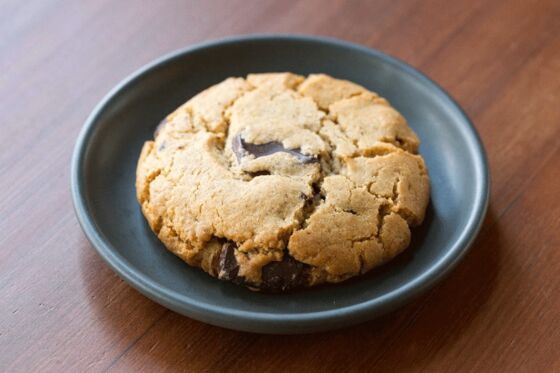A Tesla Designer Reengineers the Chocolate Chip
A Tesla Designer Reengineers the Chocolate Chip
(Bloomberg) -- Remy Labesque has a compelling day job: He’s senior industrial designer at Tesla Inc. in Los Angeles. But for three years, he’s worked on a side project that’s enviable to people outside Elon Musk’s universe. Labesque has reengineered the classic chocolate chip because, he says, the 80-year-old teardrop shape is ill-suited to its function.
“The chip isn’t a designed shape,” says Labesque. “It’s a product of an industrial manufacturing process.”
The baking standby is optimized for mass production, not for baking in cookies whose broad surface area is better suited to maximize taste and melt-in-your-mouth texture. Labesque’s redesign for artisanal Dandelion Chocolate is a square, faceted pyramid, kind of like a flattened diamond. Two edges are thick, and two exceedingly thin, for even more textural pleasure.

The Dandelion chip project was born of necessity. For years, the San Francisco chocolatier’s executive pastry chef Lisa Vega had been hand piping quarter-sized chocolate discs for her top-selling “Maybe The Very Best Chocolate Chip Cookie.” It took individuals up to 4 hours to create the chips, which were inconsistently shaped and barely met demand. She pointed out the problem to Todd Masonis, who opened Dandelion with Cameron Ring after selling their tech start-up Plaxo to Comcast Corp. for around $170 million. In 2017, Labesque was enlisted to help.

Masonis was already in the process of building a $10 million-plus Wonka-esque facility, which opened in 2019, to upgrade the company’s chocolate production. The tempering line alone, which was eventually outfitted with Labesque’s molds to create exquisitely smooth, uniform chips, cost about $500,000. Last year, Dandelion sold almost 30,000 chocolate chip cookies from its three San Francisco stores. (There are also five locations in Japan and one in Las Vegas.)
Labesque first got involved in Dandelion projects when he lived in San Francisco and attended Dandelion’s Chocolate 101 class in 2013. “I was struck by their attention to detail. It was remarkable that they were as obsessive as they were ,while still shipping at scale,” he says. Past Labesque-Dandelion collaborations include a cookie “holster” that fits on a to-go coffee cup. The designer gets paid in chocolate.

Labesque’s industrial design process includes hand-sketching concepts that are turned into computer drawings; the most promising are made into physical prototypes. (At Tesla, his focus is on solar roofs, vehicle accessories, and charging.) “I find that that’s a really effective way of thinking through the form development process,” he says.
At Dandelion, the design brief was to make “the best chip for the experience of tasting chocolate,” says chef Vega. Experts claim the way to do that is to let it melt on your tongue.

Each time a prototype came off the line, Vega would start baking. “They stay whole, but once they’re baked, the center of the chip gets soft,” she observes, a benefit for experiencing the chocolate’s texture. Labesque designed the thin, melt-in-your-mouth edges to be sturdy enough to hold their shape in baking and not to break when the chip is unmolded.
Labesque, Vega, and Masonis eventually settled on a square shape. It gave Dandelion a distinctive look, and it allowed for flat, faceted surfaces. Dandelion currently sells its “facets” in three distinct, 70% single-origin, types: from Ecuador, Costa Rica, and Madagascar. Additional single-origin styles are planned for the future. The lengthy research and development and ingredient sourcing comes at a cost: a 17.6 oz. bag of the chips goes for $30.

Michele Tanenbaum, a recipe developer in Brooklyn, N.Y., was impressed with the quality of Dandelion’s facets. When heated, they shine like glass but keep a recognizable shape and enviable texture. “You don’t experience that,” she says. Even with the better chips, they turn waxy."
Still, Dandelion has a long way to go to catch up to Nestlé USA, which remains the champion chip maker. In 2019, Toll House produced 115.5 billion chips, up from 90 billion in 2018. And a 12 oz. bag costs around $3.
©2020 Bloomberg L.P.